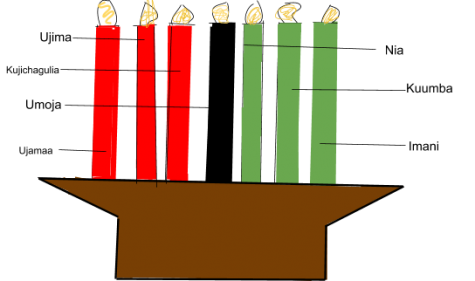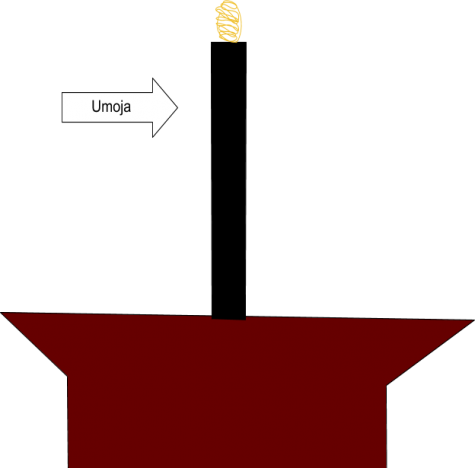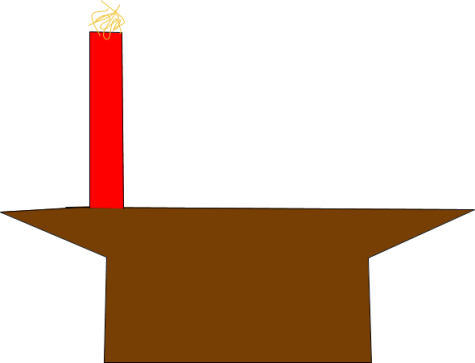Heri za Kwanzaa

Happy Kwanzaa in Swahili.
TOWAMENCIN- Kwanzaa is right around the corner. As close as it is, you may find yourself somewhat fuzzy on what this holiday is all about. It’s time to get clear.
Let’s start from the beginning. Kwanzaa doesn’t originate from Africa.
It comes from California 1966, from the mind of Dr. Maulana Karenga, professor and chair of African studies at California State, Long Beach.
Karenga drew the name Kwanzaa from the Swahili phrase “matunda ya kwanza” which means “first fruits”. He was inspired to base the holiday off of African harvest pattern times.
He created Kwanzaa in response to to his distaste to the Watts Riots and the injustices he saw being done to the African-American community during the Civil Rights Movement and to honor African heritage. Kwanzaa is an African American and pan African holiday that’s purpose is to unify the African-American community.
To accomplish this, the holiday has a set of seven principles, the Nguzo Saba (seven principles in Swahili), that guide the holiday over its seven day celebration. These principles from African culture emphasize strengthening family, culture, and community in African-Americans and Africans around the world.
Each principle directly relates to one of the mishumaa saba (seven candles in Swahili).

 Jurni Jackson
Jurni Jackson
The first principle from African culture, is represented by the singular black candle in the center. It is lit on December 26th to start the Kwanzaa celebration. This candle represents Umoja which means Unity. The day is spent striving for a unified race and family.
On the second day Kujichagulia, self-determination, is represented by the leftmost red candle. Self-determination is emphasized to bring about success and confidence.
 Collective work and responsibility is the third principle focused on the third day. The idea of working together to build and keep a community is emphasized throughout this day as the second red candle is lit. Brothers and sisters in the pan-African community are supposed to take each other’s problems on collectively to solve them and help each other.
Collective work and responsibility is the third principle focused on the third day. The idea of working together to build and keep a community is emphasized throughout this day as the second red candle is lit. Brothers and sisters in the pan-African community are supposed to take each other’s problems on collectively to solve them and help each other.
The fourth day is Ujamaa. Ujamaa is the principle of cooperative responsibility. For those participating in the celebration, it is emphasized for them to shop and use each other’s businesses and services to maintain and keep everyone’s business strong.
The first green candle is lit on the fifth day. This candle encompasses the principle Nia which is Purpose. Building and restoring the pan-African culture within each other is the purpose of today.
The second green candle that’s lit represents Creativity “Kuumba”. This day is spent focusing on making a difference in the community.
On January 1st, the last day of Kwanzaa, the Imani candle is lit. This candle represents faith. Believing in each other, yourself, and struggles leading to success is the point of the day.
These principles don’t stop once the Imani is lit. For those who celebrate Kwanzaa, the Nguzo Saba are a set of beliefs that guide them year round for a better life.
Along with these principles, there are symbols to go along with the Nguzo Saba.
The mishumaa saba (seven candles) are put inside the Kinara. The Kinara symbolizes the ancestry and roots from which African-Americans come from. Ancestors are celebrated during Kwanzaa for paving the way, protecting their descendants, and for their knowledge.
The mishumaa saba in the kinara sit on the mkeka. The mkeka is the place mat. It is bought directly from Africa and embodies African heritage and culture.
The Unity Cup (Kikombe Cha Umoja) is used during the Karamu feast on the sixth day of the holiday. The cup holds tambiko which is a drink to remember the dead. Everyone drinks to bring about unity. The drink whether water, wine, or something else, is poured to honor ancestors and a blessing is made for all.
Vibunzi is also placed on the mkeka. Vibunzi is an ear of corn for a child in a family while mihindi represents two or more ears. Each ear of corn represents a child in the family.They are a symbol for children because they represent hope for a brighter future.
Zawadi “gifts” are given on the last day of Kwanzaa to symbolize success. Gifts are encouraged to be hand-made to stick with the principle of self-determination and these gifts symbolize a commitment to the recipient to follow the Nguzo Saba year round and work on bettering themselves and the community.
Sources:
https://www.biography.com/people/maulana-karenga-21315383
http://www.officialkwanzaawebsite.org/index.shtml
https://www.history.com/topics/holidays/kwanzaa-history
https://www.africa.upenn.edu/K-12/Kwanzaa_What_16661.html

